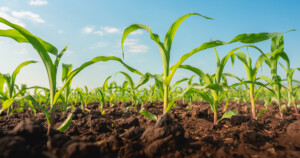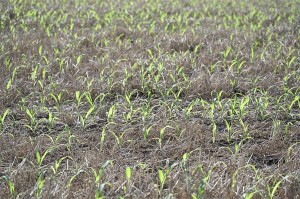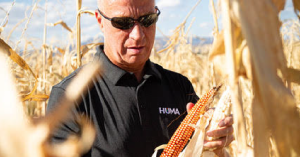Back in the mid-1980s, this then-high school student attended a farmer meeting with dad. One of the speakers was a commodities advisor. He playfully asked the attendees what their target price was for their crops. He further inquired, “How many of you are still holding out for the return of $12 soybeans?” The sheepish looks on their faces told the story. Years removed from the boom years of the early 1970s, prices were currently trading several dollars below those highs, yet farmers were still seeking a return to yesteryear. Back in the groovy 1970s, USDA Secretary Earl Butz championed an aggressive trade philosophy – accessing new markets in the Soviet Union and Asia – that transformed US agriculture from a domestic to a global market. At the same time, a rapid depreciation of the US dollar – driven by our transition from the gold standard – made American farm products very competitive. These world-shaping events ignited the farming boom of the 1970s. And the prosperity derived from unique events continued to guide the business decisions, and false hopes, of too many farmers. Fast forward to today. We recently came off unique, world-shaping events that ushered never-before-seen commodity prices and record revenues in 2022 for farmers and many who serve them. Now, just two years later, corn prices have dropped nearly $4 and many economists are projecting farm incomes to drop an astounding 90% in 2024. Farmers, as well as those of us in the ag industry, must avoid being seduced by the boom of 2022. The fundamentals aren’t currently there. We must all be realistic. Fortunately, due to escalated farmland prices (that show no signs of dropping), the balance sheets of many farms are still healthy. But the current economic state of farming will drive behavior. Farmers will become even savvier shoppers. They’ll seek to reduce crop input expenses, which opens the door for products such as biologicals and biostimulants that can help them cut rates of expensive synthetic products. They’ll look to the soil for answers, which should accelerate interest in soil health and regenerative ag solutions. And they’ll explore new revenue streams that include CI scores and raising sustainably grown crops.
Where’s the beef? US herds have shrunk to their lowest level since 1951, standing at 87.2 million head. Does that mean there’s fewer burgers and steaks on the grill? Not really. Americans set a record for beef consumption in 2021, consuming 30 million pounds, and 2022 was the second-highest year of consumption. But exports dropped 14% last year, dropping the US to #4 in world exports (Brazil is the leader). Yes, other nations have gotten better at producing beef. But the ever-rising US dollar is not helping exports. Last week’s job report, regardless of how accurate some may believe it to be, propped the dollar up even more. High interest rates also play a role for a product that takes over two years (from conception to the meat counter) to produce. The other big issue is the weather. Persistent drought conditions across cattle country, the Plains, has made feed scarce and expensive. That caused many producers to reduce herd size despite historically high cattle prices.
Mark this one down. Next Monday at 1:00 CST our friends Matt Rohlik of Arva Intelligence and Mitchell Hora of Continuum Ag will discuss “Making Money on the Farm with Sustainability and Carbon Intensity” on the TopSoil Webcast. You can register here.
This weekend is the Super Bowl. It’s the one day of the year when people look forward to watching TV commercials. You can have all the frogs, Clydesdales and celebrity shticks you want. The GOAT of all Super Bowl commercials comes from Dodge trucks. It’s voiced by Paul Harvey. It pays homage to the world’s greatest profession. And it still produces goosebumps. Enjoy “God Made a Farmer.”
Related Posts

This Week in Ag #10
Football may be a game of inches, but farming is a business of fractional inches. Take planting. Seed placement is paramount to the success of a crop. Farmers spend lots of time calculating the optimum rate and depth to plant their seeds based on genetics, soil type, soil conditions, weather, management practices and the desired output

This Week in Ag #43
December 8th is #NationalChristmasTreeDay. This of course sets up the great debate, real or fake? While every family weighs the pros and cons of choosing the Tannenbaum they rock around, a popular nation is that fake trees are more eco-friendly. After all, they can keep for many years, right? And isn’t it bad to cut down real trees merely for decoration? Not so fast.

This Week in Ag #50
When explaining the carbon offset market, many of you have heard me give the example of companies and individuals purchasing carbon credits to “offset” their carbon footprints. By nature of what they do, some businesses such as airlines have no choice, as they’ll otherwise never come close to meeting self-imposed carbon footprint targets.

